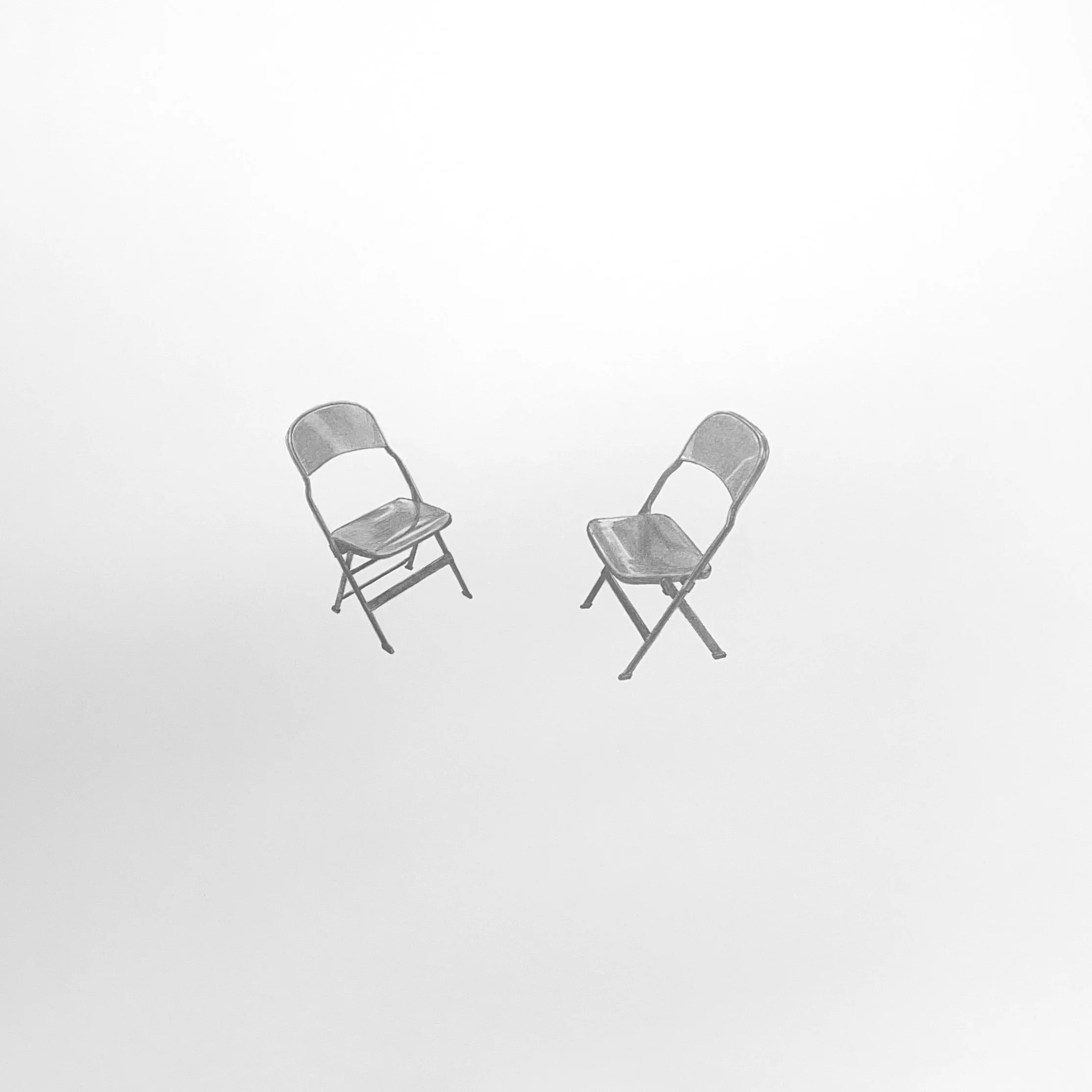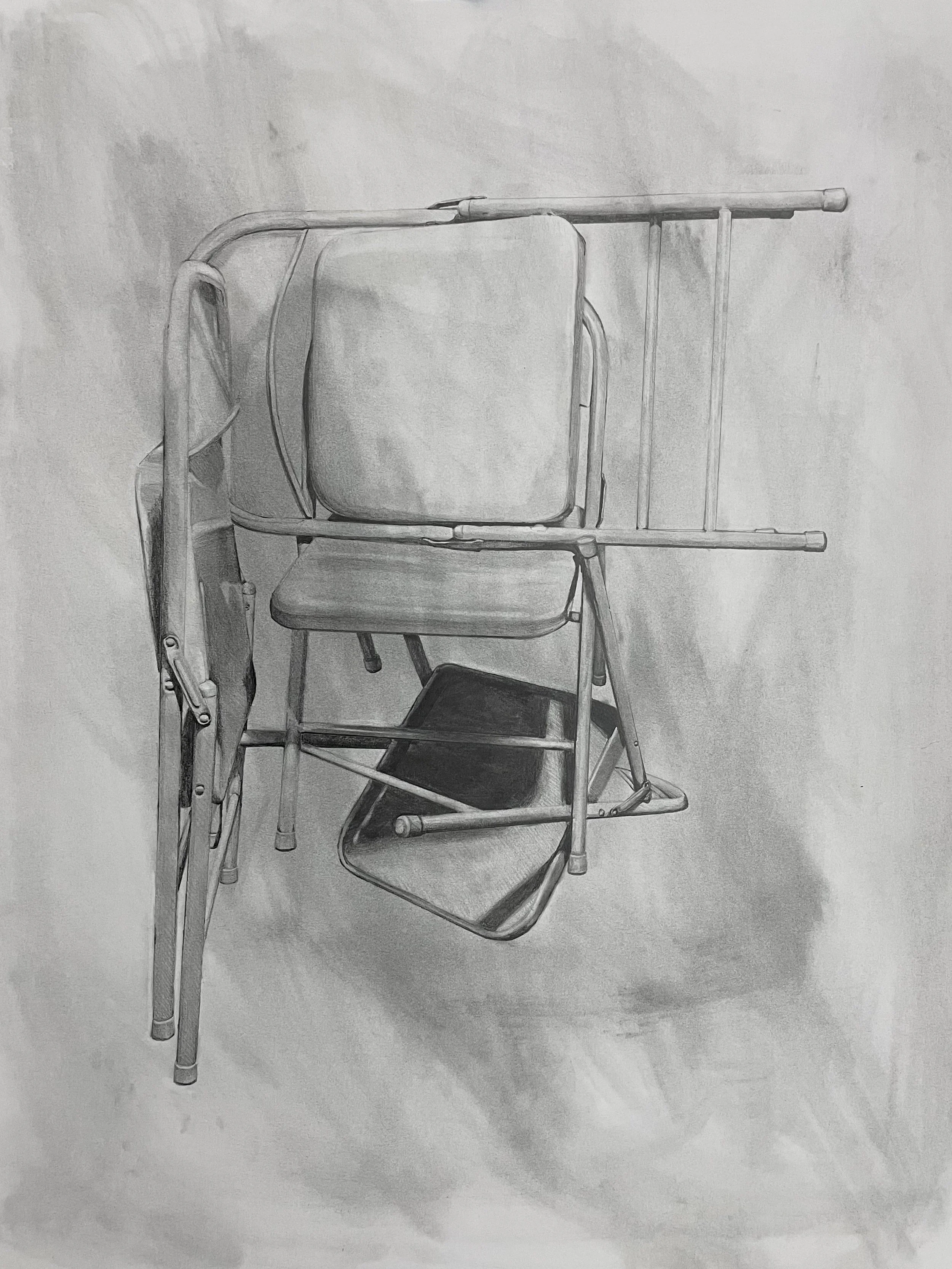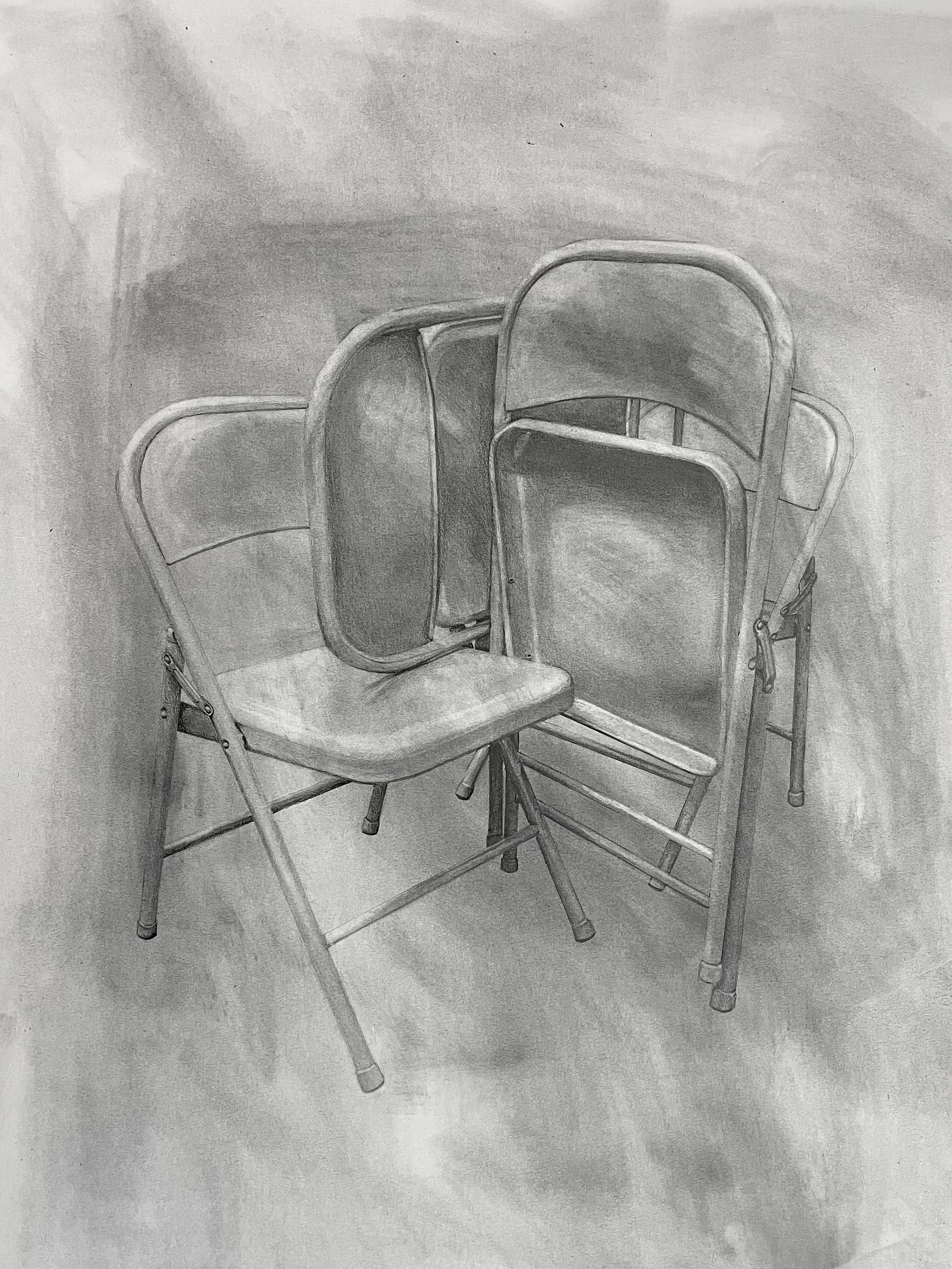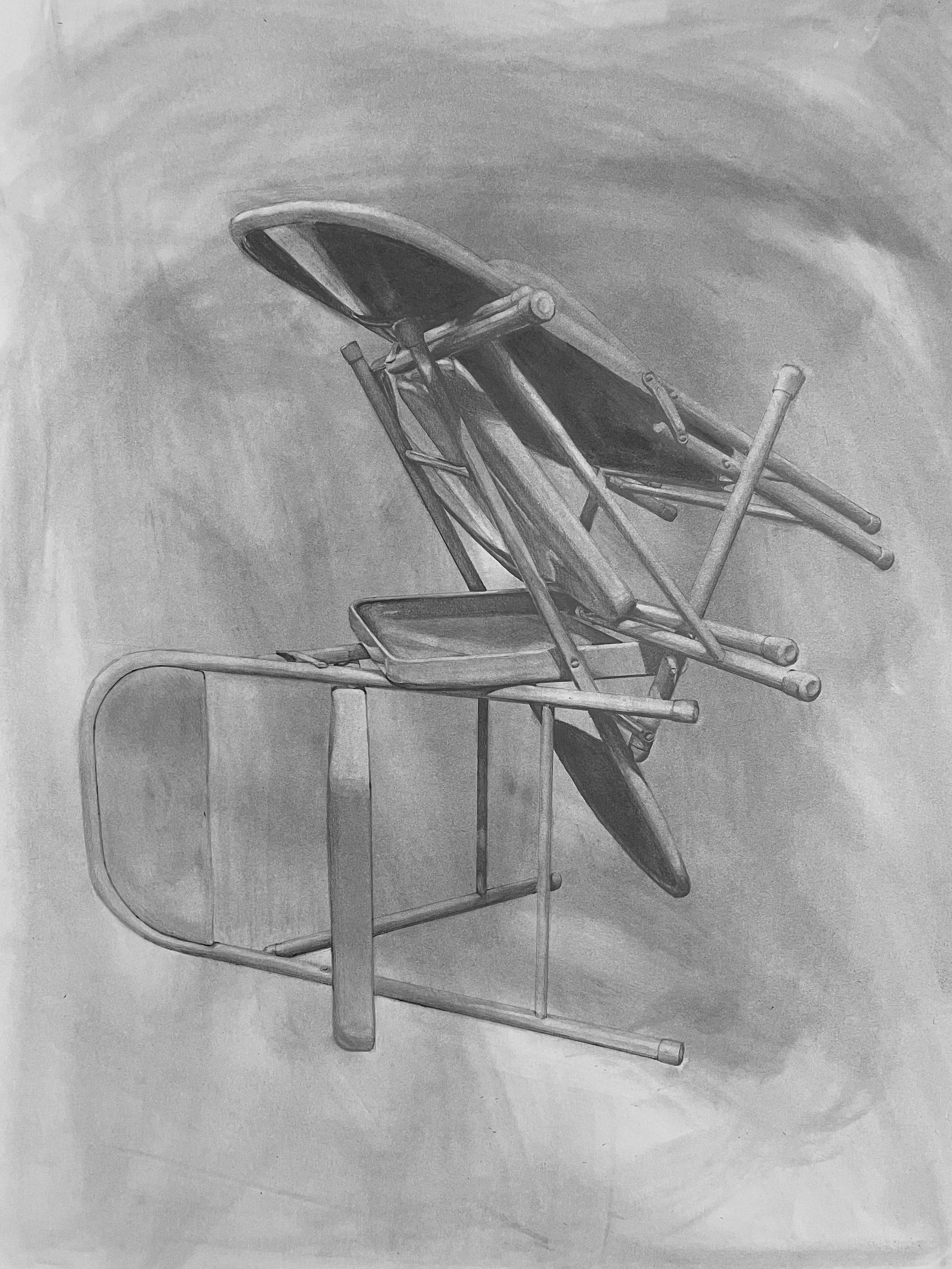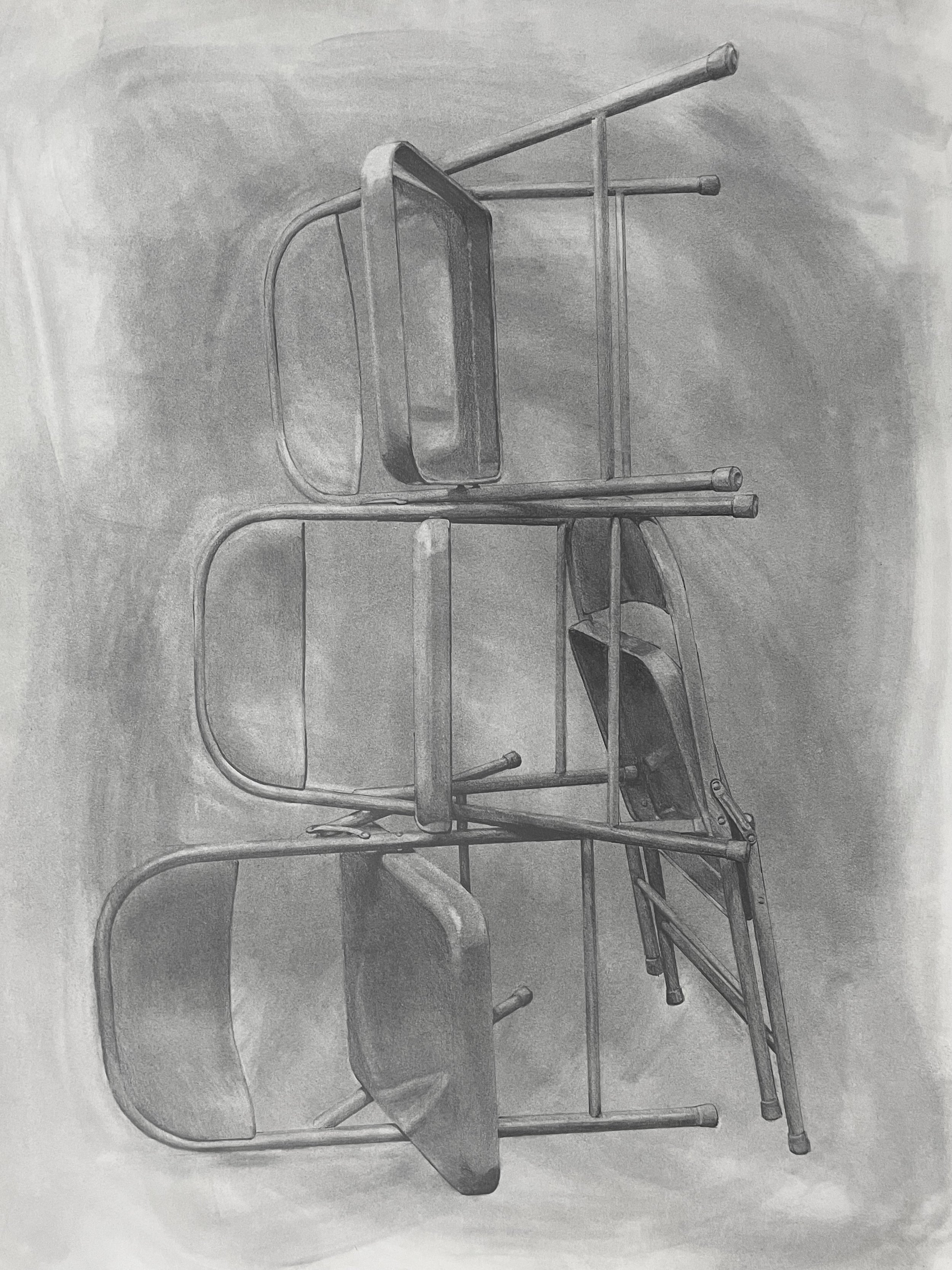To Fold and Repeat
Folding chairs are uncomfortable. Sitting in one for long periods of time becomes painful, but they are necessary. Similarly, learning to cope with mental illness disabilities is an uncomfortable challenge, but one that is necessary for many individuals. This exhibition looks at the relationship between repetition and Obsessive Compulsive Disorder (OCD). Like many mental health issues, OCD has a variety of symptoms that are often misrepresented and misunderstood by the general public. Regardless of these misunderstandings, individuals with OCD have to learn the coping mechanisms necessary for life with OCD.
Arrangements
Folding chairs are versatile in function and concept. Their purpose is determined by formation. Placed in a circle, they invite the group discussion you would find in a support group. Set up in columns and rows, they can be used for an audience, class, or lecture. Create an aisle down the middle and they’re ready for religious worship or a wedding. Along a wall for a waiting room, along a table for a meal. A single folding chair for isolation. Easily fold them up and they can be stored away and forgotten about.
Structures for Coping
Causes, symptoms, and treatment vary greatly for people with OCD. With this as a starting point, I set out to create a series of formations using the same four folding chairs. These drawings begin as sculpture first, then photographs, then turned into drawing for their final form. The cycles and repetition at the heart of this series mirrored many of my own experiences with Obsessive Compulsive Disorder.
To Fold and Divide
This installation includes rows of four folding chairs screen printed on a 180 foot scroll. The scroll is tangled and nested around four scattered folding chairs in the gallery. Intrusive thoughts are unwanted thoughts or images and are often reoccurring. Intrusive thoughts ensnare the mind, becoming so obsessive that they make life debilitating and impossible.
Preludes and Fugues
Fugues are a musical structure that builds on a repeated theme or “voice.” These themes are stacked and layered to create the piece of music. These monoprints were created while listening to Dmitri Shostakovich’s Preludes and Fugues. Shostakovich was often sandwiched between being forced to create propaganda for the Soviet Union while subverting these demands.
For the Eyes of Dogs



















